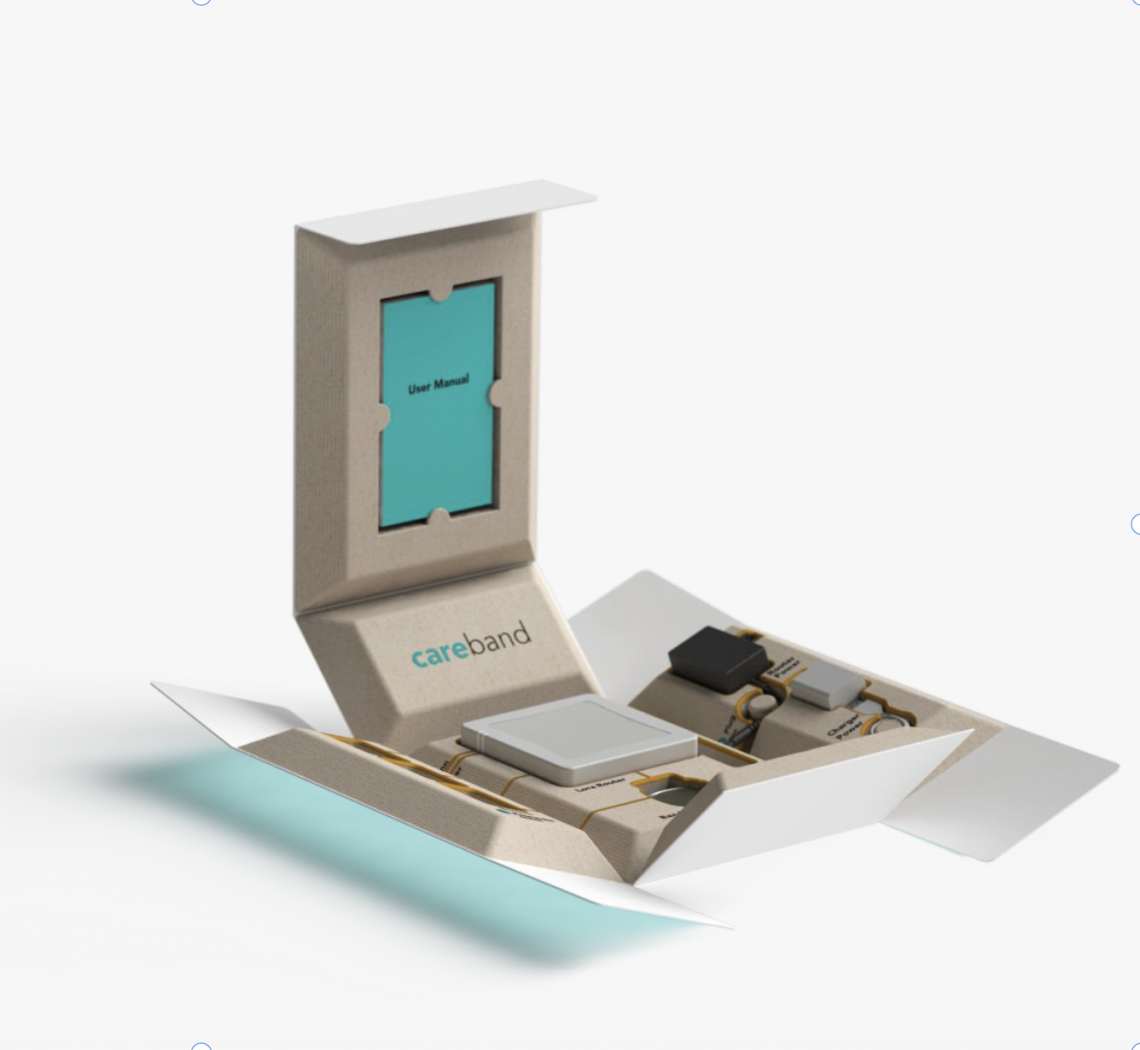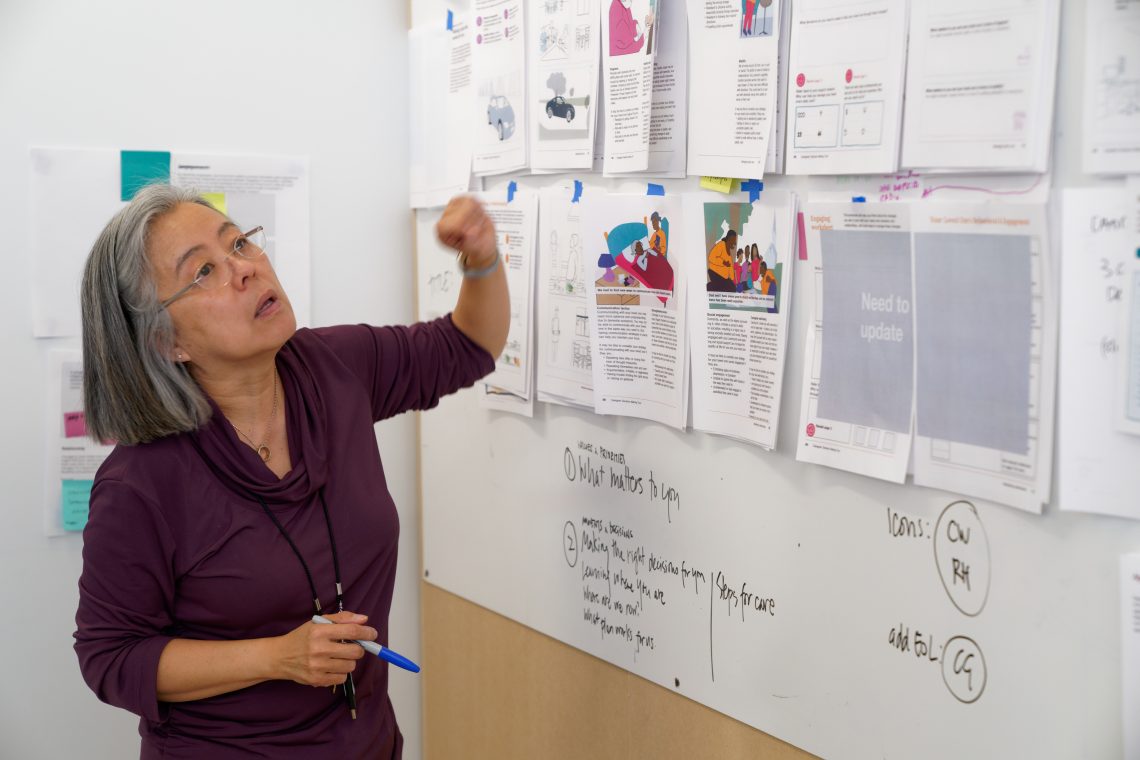
For the roughly 50 million people worldwide living with dementia, daily life can become a struggle, characterized by confusion, forgetfulness, and difficulty completing everyday tasks. It takes a toll on families and caretakers for those individuals, too, causing stress and negatively impacting mental health.
In an effort to make life easier both for those living with dementia and those who support them, CareBand, a startup based out of Chicago’s mHUB incubator, is producing a wearable device meant to make life easier. A group of IIT Institute of Design students leveraged their design and research skills to create a user interface and physical design in partnership with CareBand’s Chief Executive Officer, Adam Sobol.

Packaging: rendering of unboxing CareBand
Distilling key insights into design principles
ID students started by gathering key insights on individuals living with dementia and their families to understand how a wearable device could be a beneficial intervention. Through stakeholder interviews, they learned that users wanted to make their own decisions, maintain their social connections, destigmatize the condition, and feel supported by the device while removing the mental burden for their caregivers.
These insights informed the team’s design principles, which drove the design process. The ID team decided that the product should be:
- Conversational: using plain-spoken language and a clear visual hierarchy
- Respectful: personalized, and acknowledging user habits
- Transparent: prioritizing openness
- Connected: enhancing social connections and benefitting all stakeholders
D’s CareBand design starts with the packaging: a box that when opened folds into a flat “map” showing the relationship between all the pieces of the CareBand package. Inside is the CareBand, a stylish watch-like device with interchangeable face plates for users to customize. The band comes with “beacons,” which pair with the CareBand and are installed in rooms to monitor the wearer’s movement throughout the home.
Caregivers are provided with a mobile app that shares information about how their loved ones with dementia are progressing throughout the day. Caretakers can be notified via a text, call, or push notification when a wearer exits a room or the home, while a geofencing feature on the device establishes a predetermined perimeter for travel to ensure the person with dementia does not get lost or wander too far. If they do, visual cues and voice reminders guide them home. The device also features an emergency button on the side, made purposefully discrete to avoid labeling users as patients.
“This is a tracking device for medical purposes, but no one wants to be labeled as a patient who needs additional care and allows their caregiver to monitor their activities,” says Liao. “The design should be like other daily objects everyone will wear and use.”
Having received positive feedback on the concept from CareBand, the concepts produced by the ID students will be brought to CareBand’s in-house development team for implementation.


